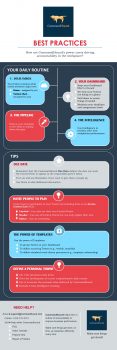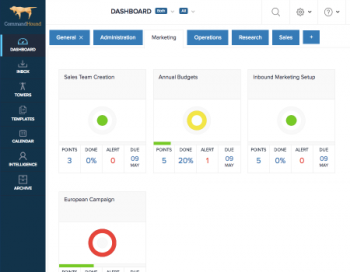Nowadays, we are spending more and more time working at all hours of the day and night. Worst yet, we talk ourselves into believing that things will get better soon.
Insights: Productivity
Did you know that the most important part of CommandHound is your Inbox? Inbox first, then Dashboard (to review your own Control Towers), then everything else. Here is a nice Infographic to get you to easily incorporate CommandHound into you morning routine.
Have you ever wondered if it is worth the investment to develop mobile-friendly ways to give your employees access to critical business applications? And, how important is it to focus on the user’s experience in realizing the expected results?
First, let’s agree that meetings are a reliable and efficient way to get teams aligned behind a common objective or goal. Let’s also agree that, if not carefully managed, meetings can quickly unravel into a massive waste of time.
The gig economy is here to stay. Intuit estimates that by 2020, as many as 40 percent of Americans will be contingent, or “gig” workers. Gig workers can be freelancers, independent contractors, or any other outsourced employees who are hired on a per-project basis.
Some of these contingent workers choose to work outside of a payroll system either as full-time freelancers or as part-time workers who supplement their income by picking up gigs. Others take contingent jobs out of necessity even though they would prefer full-time employee status.
Have you ever taken a short break at work to read an article online and accidentally fallen into an internet rabbit hole, only to emerge an hour later, praying that no one noticed how disconnected you were from your work?
Using CommandHound to drive accountability in the workplace does not just require implementing the software. It involves a culture change as well, which has lasting positive ramifications for any organization.
First, let’s agree that meetings are a reliable and efficient way to get teams aligned behind a common objective or goal. Let’s also agree that, if not carefully managed, meetings can quickly unravel into a massive waste of time.
We often hear that we should keep our work life separate from our personal life to make things easier. However, with the advent of constant and relentless connectivity we find ourselves mixing personal and work activities more and more.
We often engage with our clients in the early stages of a CommandHound-driven accountability initiative to help them define how to best use CommandHound in conjunction with their existing operational systems.







